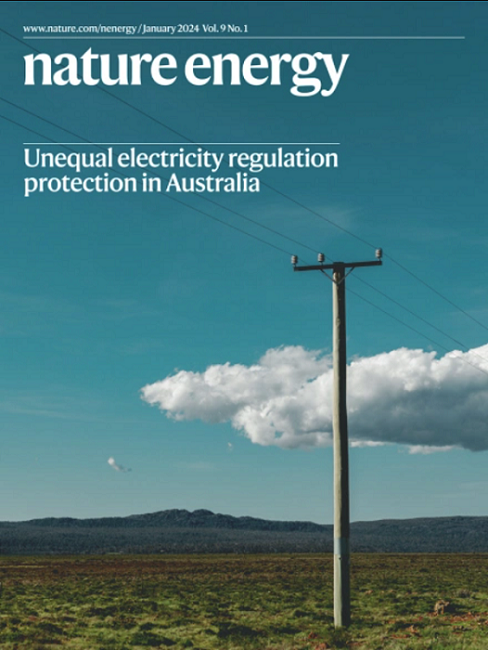The impact of interfacial quality and nanoscale performance disorder on the stability of alloyed perovskite solar cells
IF 49.7
1区 材料科学
Q1 ENERGY & FUELS
引用次数: 0
Abstract
Microscopy provides a proxy for assessing the operation of perovskite solar cells, yet most works in the literature have focused on bare perovskite thin films, missing charge transport and recombination losses present in full devices. Here we demonstrate a multimodal operando microscopy toolkit to measure and spatially correlate nanoscale charge transport losses, recombination losses and chemical composition. By applying this toolkit to the same scan areas of state-of-the-art, alloyed perovskite cells before and after extended operation, we show that devices with the highest macroscopic performance have the lowest initial performance spatial heterogeneity—a crucial link that is missed in conventional microscopy. We show that engineering stable interfaces is critical to achieving robust devices. Once the interfaces are stabilized, we show that compositional engineering to homogenize charge extraction and to minimize variations in local power conversion efficiency is critical to improve performance and stability. We find that in our device space, perovskites can tolerate spatial disorder in chemistry, but not charge extraction. Conventional microscopy is unable to correlate nanoscale properties of metal halide perovskites with the performance of solar cells. Frohna et al. present a multimodal operando microscopy toolkit as a diagnostic tool to address the issue.


界面质量和纳米级性能紊乱对合金化过氧化物太阳能电池稳定性的影响
显微镜为评估包晶体太阳能电池的运行情况提供了一种替代方法,但文献中的大多数工作都集中在裸包晶体薄膜上,而忽略了完整设备中存在的电荷传输和重组损耗。在这里,我们展示了一种多模态操作显微镜工具包,用于测量和空间关联纳米级电荷传输损耗、重组损耗和化学成分。通过将该工具包应用于最先进的合金包晶电池在长时间运行前后的相同扫描区域,我们发现具有最高宏观性能的器件具有最低的初始性能空间异质性--这是传统显微镜所忽略的关键环节。我们表明,设计稳定的界面对于实现稳健的器件至关重要。一旦界面稳定下来,我们就会发现,要提高性能和稳定性,关键是要进行成分工程,使电荷提取均匀化,并尽量减少局部功率转换效率的变化。我们发现,在我们的设备空间中,过氧化物晶石可以容忍化学空间紊乱,但不能容忍电荷萃取。
本文章由计算机程序翻译,如有差异,请以英文原文为准。
求助全文
约1分钟内获得全文
求助全文
来源期刊

Nature Energy
Energy-Energy Engineering and Power Technology
CiteScore
75.10
自引率
1.10%
发文量
193
期刊介绍:
Nature Energy is a monthly, online-only journal committed to showcasing the most impactful research on energy, covering everything from its generation and distribution to the societal implications of energy technologies and policies.
With a focus on exploring all facets of the ongoing energy discourse, Nature Energy delves into topics such as energy generation, storage, distribution, management, and the societal impacts of energy technologies and policies. Emphasizing studies that push the boundaries of knowledge and contribute to the development of next-generation solutions, the journal serves as a platform for the exchange of ideas among stakeholders at the forefront of the energy sector.
Maintaining the hallmark standards of the Nature brand, Nature Energy boasts a dedicated team of professional editors, a rigorous peer-review process, meticulous copy-editing and production, rapid publication times, and editorial independence.
In addition to original research articles, Nature Energy also publishes a range of content types, including Comments, Perspectives, Reviews, News & Views, Features, and Correspondence, covering a diverse array of disciplines relevant to the field of energy.
 求助内容:
求助内容: 应助结果提醒方式:
应助结果提醒方式:


